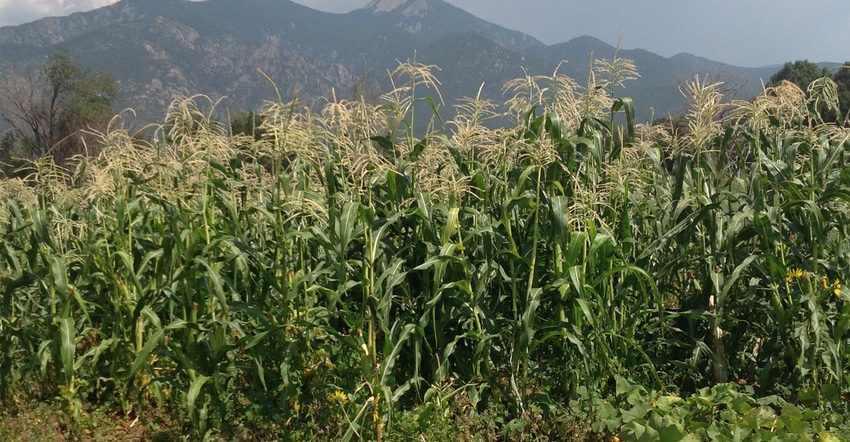December 7, 2018

By some standards, native North American cultures of the American Southwest were developing traditional methods of agriculture some 800 years ago, long before the European settlers arrived. Earlier farming methods in the Americas were being tested much earlier, at least 4,000 years ago, as the Olmec began breeding seeds and developing maize, or corn, as a staple upon which civilizations soon began to grow and stabilize.
Other types of early crops quickly developed and included beans, squash, chili peppers, cotton and other types of edible variations. While the colder climate regions of North America were slower to adapt to agriculture and continued to rely on hunting and gathering, what were probably cousins of the Olmec and Teotihuacanos, began to adopt agricultural practices of their distant neighbors at Mimbres, Anasazi, Mogollon and Sinaguan cultural sites like Chaco Canyon and Mesa Verde.
For these early Southwest cultures, growing crops in the arid region was challenging at best, but surprisingly, some of these cultures flourished if but for a short period of time, surviving off what they hunted and what they could grow, mostly corn, beans and squash.
Fast-forward through history and today in modern times, mostly in New Mexico, Puebloan cultures like Tesuque, Taos, Zuni, Pojoaque, Acoma, and others, still manage to farm and ranch, though at a limited level.
Edmund Gomez, assistant department head & project director at New Mexico State Extension Economics and assistant department head & project director for NMSU Rural Agricultural Improvement in Alcalde, has been working with Native Americans across the Southwest region including the Southern Ute, Jicarilla Apache and multiple Pueblos for over 27 years.
“I first worked with the Jicarilla Apache as an extension agent through a USDA grant program and later with other groups through a limited five-year funding opportunity through the Kellogg Foundation at the Alcalde Science Center. But after funding ran out, I have continued to scramble for and have been fortunate to find additional grants to continue our work with Native American farmers who say they have lost most of their cultural farming heritage down through the years,” Gomez said.
Gomez, who was raised in Northern New Mexico near the Jicarilla Apache Reservation, is also a working, self-employed rancher and educator, and says the state’s Pueblos have the longest running farms and ranches in the United States and have been struggling to recapture so much they have lost down through the years.
He says in some cases, because of tribal independence, Pueblos have been left on their own when it comes to the advances in agricultural practices because of a lack of sustained programs to assist them in their goal to maintain their long-standing and traditional agricultural heritage.
“The Elders [of these cultures] approached those of us working with them and said basically they have been losing their farm culture while the outside world has been developing farming methods and new technologies that they either do not know about or don’t understand and they are asking for help to bring these new methods and technologies and equipment to their farms in hopes of engaging their youth to continue their traditions of self-sufficiency,” he said.
Gomez says the tribes and Pueblo cultures have been losing their native languages in modern times and struggle to maintain their sacred traditions before they are lost, and they are in need of assistance.
“A good example is an incident at Cochiti Pueblo. When they constructed a dam in Pueblo County Colorado to serve as a water source on the Arkansas River they didn’t realize that the seepage of the dam was going to flood their traditional farm fields and lost their farms for nearly two generations as a result. Finally, they filed a lawsuit against the Bureau of Reclamation to help them drain their fields. But when that happened, they lost all of their topsoil in the process and we have been helping them recover what they lost so they can restore their farming operations once again,” Edmund said.
Most of the tribal farms are small-scale, but he said among the Native American cultures things like language and agriculture are very much a major part of their cultural identity and traditions and play a major role in saving their entire culture from being forgotten.
Gomez's work along with others who are involved in the projects is not only to help the Pueblos and tribes restore their agricultural traditions but to educate the rest of the world on the importance of preserving cultural heritage. One way to do that is to have educators, business representatives and interested individuals to participate in cultural exchange programs.
Recently a tour at Taos Pueblo provided the opportunity for visitors to connect with ancient farming practices and offer tribal farmers a chance to learn about new farming methods.
Edmund says the funding for a new year has been secured to continue his work. The College of Agricultural, Consumer and Environmental Sciences has received a $197,492 USDA grant for 2019.
“The funds will be used to continue our outreach program to farmers in the 10 southern and eight northern pueblos in our state,” said Gomez, the NMSU program director. “This funding will allow access to our workshops and ag days to all pueblo farmers and ranchers.”
Through a coordinated effort led by the Cooperative Extension Service’s New Mexico Pueblo Outreach Project, the pueblo agricultural producers are made aware of USDA programs that can benefit their ability to own and operate their family farms and ranches; be individually assisted in obtaining participation in these USDA programs; develop markets to increase profitability; and utilize research-based educational and technical assistance programs that are specifically developed for the target audience.
He says the program is all about helping Native Americans to gain access to programs and educational opportunities while maintaining and sharing their ancient traditions and cultures with others.
You May Also Like




